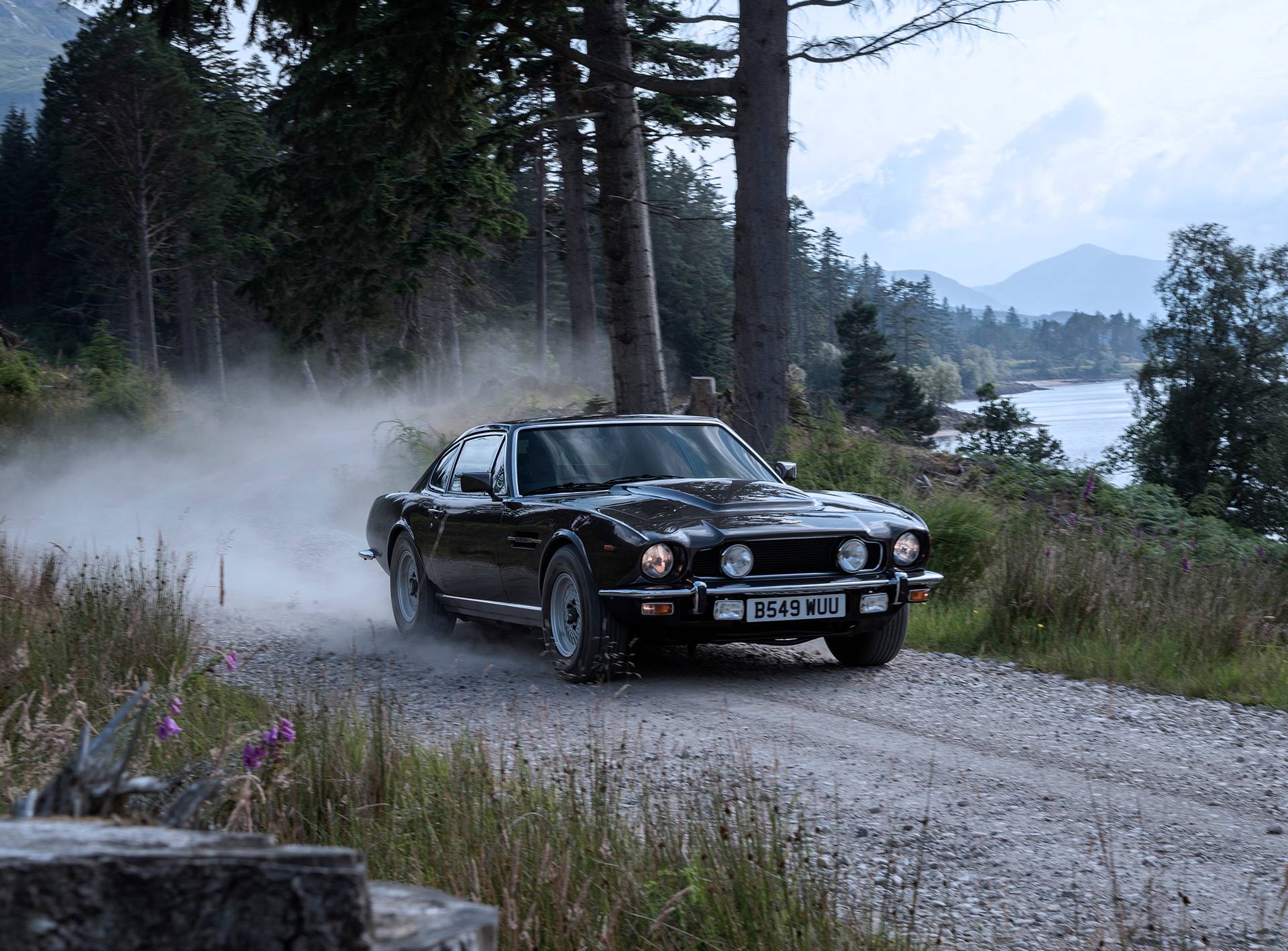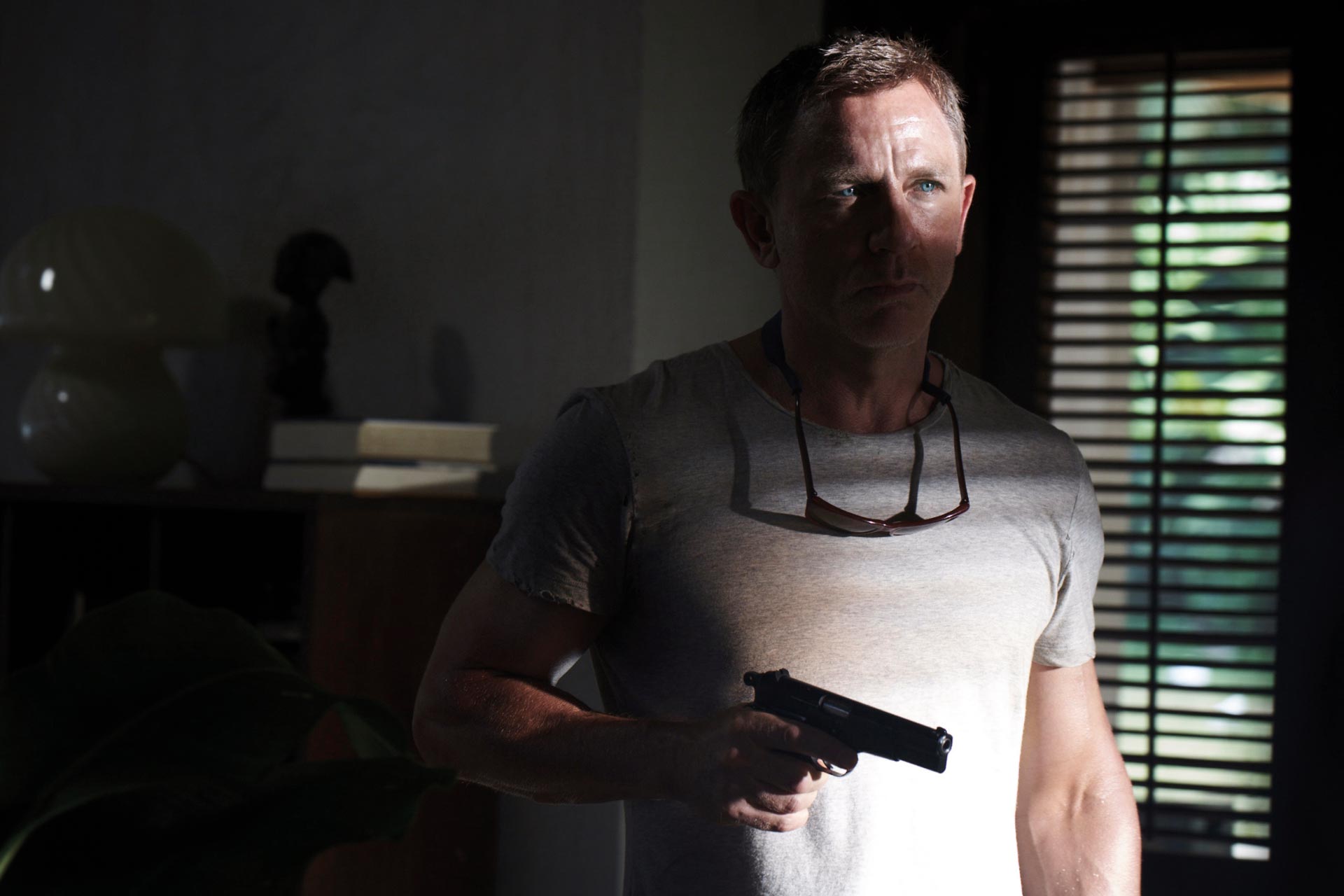


The bulletproof chassis and glass come under fire before the V8 hurtles onto a frozen lake to evade the arriving military, smashing through a wooden cabin (that the car wears for a while), avoiding enemy grenade launchers and cutting a hole in the ice with a tyre-less rim to sink a chasing police car. The Aston then sprouts outriggers and fires its rear rocket booster, leaping over a border patrol checkpoint, careering off-piste through the snow and crashing into a snowbank. Bond presses the Self-destruct button before he and Kara escape, using her cello case as a sled.
In No Time To Die, Bond retrieves the hardtop V8 (sporting the same B549 WUU number-plate from the earlier film) from his London lock-up ahead of his visit to MI6. He then drives the car to Madeleine’s childhood home in the Norwegian countryside.
For No Time To Die, the filmmakers employed a variety of Aston Martin models and, as well as reuniting Bond with his DB5, they also once more put him behind the wheel of a V8.
The film’s director, John Glen, originally planned the frozen lake sequence with yachts skidding about on the ice, but the weather conditions and temperamental sailors forced him to change tack, and the Aston was chosen for the job. Filmed in Weissensee, Austria, the lake ice driving scenes were among the last shot. The weather caused havoc, with a rise in temperatures breaking the ice and the Aston nearly falling into the lake. Glen recalled how the car almost floated away on a separating piece of ice, leaving the crew to desperately try and coax it back onto firmer ground without tumbling into the icy waters. Such was the demand for parts during the shoot, there was, apparently, a shortage of bumpers and windscreens at the Aston factory. The filmmakers used three V8 ‘roadcars’ that were modified for filming, along with seven replicas for stunts and special effects – six fibreglass shells and one aluminium.
Three cars were used in filming No Time To Die. As well as cruising the London streets, the V8 was also shot crossing the iconic Atlantic Ocean Road in Norway, which is often cited as one of the most nerve-wracking stretches of A-roads in the world, spanning a series of small islands with its causeways and arched bridges running for more than five miles. One of the three V8s was sold for £630,000 in 2022 as part of the 007 60th anniversary Christie’s charity auction. The other two are now in the archives of Eon Productions and Aston Martin.
Sign up for 007 news from the world of James Bond.
Receive exclusive updates and content – from behind-the-scenes stories, to the latest product launches – plus film clips and trivia from the Bond archive.
 Learn more about our privacy policy here
Learn more about our privacy policy here
